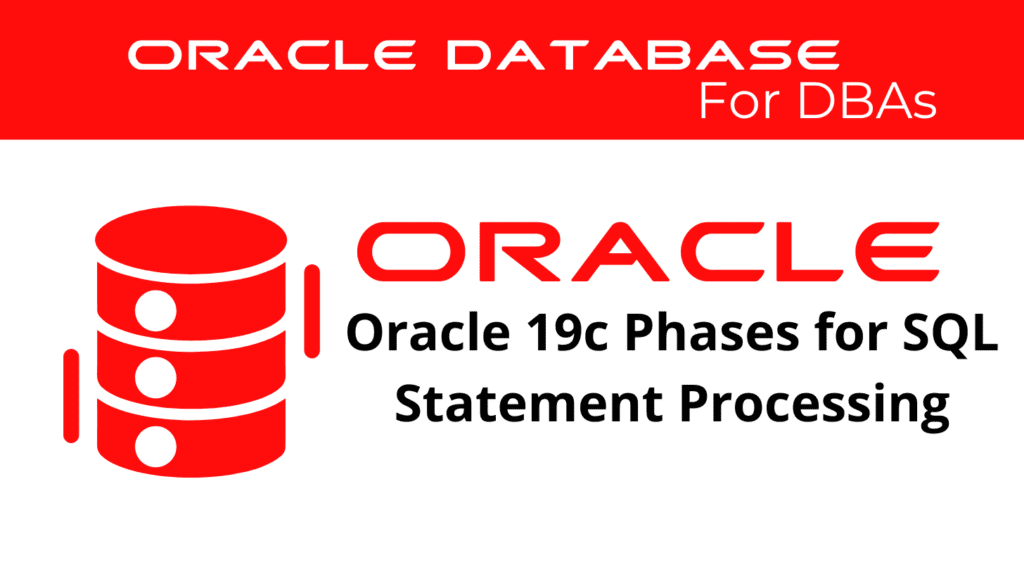
Oracle 19c provides a comprehensive approach to handling SQL statement processing. Understanding the various SQL statement phases and SQL processing steps is essential for database administrators and developers to optimize query performance and ensure efficient database operations. This article will guide you through the key phases involved in SQL statement processing in Oracle 19c.
Understanding SQL Statement Phases
The SQL statement phases refer to the different stages an SQL statement goes through from its creation to execution. Each phase plays a crucial role in ensuring that the database correctly parses, optimizes, and executes the SQL statement.
Key Features of SQL Statement Phases
Parsing: The first phase involves syntactic and semantic checks to ensure the SQL statement is valid.
Optimization: The statement is optimized to create an efficient execution plan.
Row Source Generation: The execution plan is converted into a series of row source operations.
Execution: The final phase where the SQL statement is executed and results are fetched.
📢 You might also like: Oracle 19c Execution Plans (Category: Performance Management and Tuning)
Step-by-Step Guide to SQL Statement Phases
Step1: Parsing the SQL Statement
SELECT * FROM employees WHERE department_id = 10;
Parsing involves checking the syntax and semantics of the SQL statement. This ensures that the SQL statement is correct and can be processed by the database engine.
Step2: Optimization
EXPLAIN PLAN FOR SELECT * FROM employees WHERE department_id = 10;
During the optimization phase, the Oracle optimizer evaluates various execution plans and selects the most efficient one. The goal is to minimize the cost of the query in terms of resource usage.
Step3: Row Source Generation
SELECT /*+ gather_plan_statistics */ * FROM employees WHERE department_id = 10;
In this phase, the execution plan transforms into row source operations, which are the actual operations that retrieve the data.
Step4: Execution
SELECT * FROM TABLE(DBMS_XPLAN.DISPLAY_CURSOR(NULL, NULL, 'ALLSTATS LAST'));
The final phase involves executing the SQL statement based on the generated execution plan. The results are then fetched and returned to the user.
SQL Statement Phases – Monitoring SQL Processing
Monitoring SQL processing in Oracle 19c is crucial to ensure that queries are running efficiently and to identify any potential performance issues.
Key Components of SQL Processing Monitoring
Real-Time Monitoring: Provides immediate insights into SQL statement execution.
Historical Analysis: Allows analysis of past SQL executions to identify trends and potential issues.
Alerting: Sends notifications for any anomalies or performance degradation.
Detailed Metrics: Tracks various performance metrics such as CPU usage, memory usage, and I/O operations.
User Activity Monitoring: Monitors user activity to detect any unusual patterns that may impact performance.
SQL Statement Phases – Monitoring SQL Processing
Step1: Enable SQL Monitoring
ALTER SYSTEM SET CONTROL_MANAGEMENT_PACK_ACCESS='DIAGNOSTIC+TUNING' SCOPE=BOTH;
Step2: Set Up Automatic Workload Repository (AWR)
BEGIN
DBMS_WORKLOAD_REPOSITORY.CREATE_SNAPSHOT;
END;
Step3: Configure Alerts and Notifications
BEGIN
DBMS_SERVER_ALERT.SET_THRESHOLD(
metrics_id => DBMS_SERVER_ALERT.CPU_TIME_PER_CALL,
warning_operator => DBMS_SERVER_ALERT.OPERATOR_GE,
warning_value => '300',
critical_operator => DBMS_SERVER_ALERT.OPERATOR_GE,
critical_value => '500',
observation_period => 1,
consecutive_occurrences => 1
);
END;
Step4: Monitor SQL Performance Metrics
SELECT * FROM v$sysmetric WHERE metric_name='Database CPU Time Ratio';
Step5: Analyze Historical SQL Performance Data
SELECT * FROM dba_hist_sqlstat WHERE sql_id='your_sql_id';
Benefits of Understanding SQL Statement Phases and Monitoring SQL Processing
Implementing effective SQL statement phases and SQL processing monitoring in Oracle 19c provides numerous benefits:
Enhanced Application Performance: Optimizes application performance by ensuring efficient execution plans.
Proactive Issue Resolution: Identifies and resolves potential performance issues before they affect users.
Improved Resource Management: Ensures optimal use of database resources, reducing operational costs.
High Availability: Maintains continuous availability of critical database services.
Best Practices
To maximize the benefits of understanding SQL phases and monitoring SQL processing, consider the following best practices:
Regular Monitoring: Continuously monitor SQL performance to ensure seamless operations.
Define Clear Thresholds: Set clear performance thresholds to get timely alerts for potential issues.
Automate Monitoring: Use automation tools to minimize manual monitoring efforts.
Analyze Trends: Regularly analyze performance trends to identify and address long-term issues.
Ensure Security: Implement strong security measures to protect monitoring data and ensure it is accessible only to authorized personnel.
Conclusion
Oracle 19c’s approach to SQL statement phases and SQL processing offers powerful solutions for managing database performance. By understanding and leveraging these phases, database administrators can optimize their SQL statements for performance, maintain high availability, and proactively address performance issues.
Following best practices and effectively managing SQL phases and performance metrics will help database administrators maintain optimal Oracle 19c environments, meeting the demands of today’s data-driven landscape.
See more on Oracle’s website!
Be Oracle Performance Management and Tuning Certified Professional, this world is full of opportunities for qualified DBAs!





